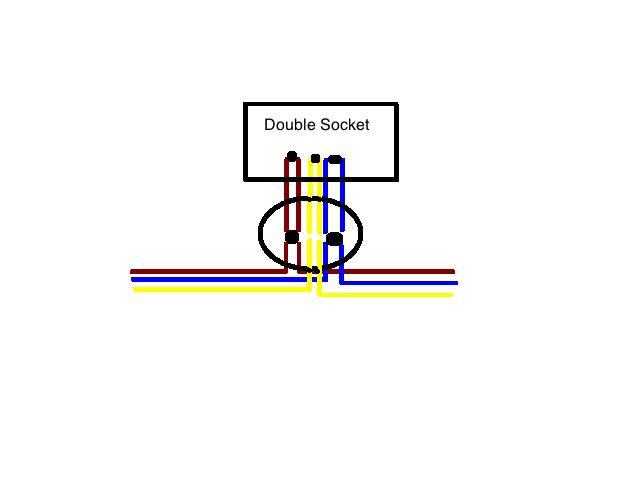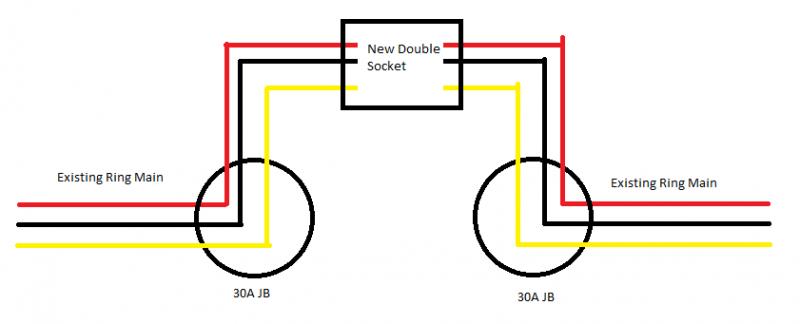I need to add a socket onto a ring in my utility room. I have access to a run of cable in between two existing sockets, however I am unable to remove the cable from either socket as it runs behind the sink which was added after the cable was run.
I want the new socket to be on the ring, and would have no problem if it was located next to where the cable runs, but I don't have enough free cable to put the socket where I want it.
My plan is to mount a 30A junction box on the wall
I'll then cut the cable to make two ends, and run it into the junction box.
My question then is, if I run two cables from the junction box to the newly added socket, is this new socket technically part of the ring, or is the second cable redundant in this case and have I only created a spur?
If the latter is true, I can keep the socket on the ring by using a second junction box, one per leg of the cable, but this just seems pointless as this setup is performing in exactly the same way as the first, only with less load on the junction box.
Here is a diagram of what I propose to do, any help is greatly appreciated.
I want the new socket to be on the ring, and would have no problem if it was located next to where the cable runs, but I don't have enough free cable to put the socket where I want it.
My plan is to mount a 30A junction box on the wall
I'll then cut the cable to make two ends, and run it into the junction box.
My question then is, if I run two cables from the junction box to the newly added socket, is this new socket technically part of the ring, or is the second cable redundant in this case and have I only created a spur?
If the latter is true, I can keep the socket on the ring by using a second junction box, one per leg of the cable, but this just seems pointless as this setup is performing in exactly the same way as the first, only with less load on the junction box.
Here is a diagram of what I propose to do, any help is greatly appreciated.




